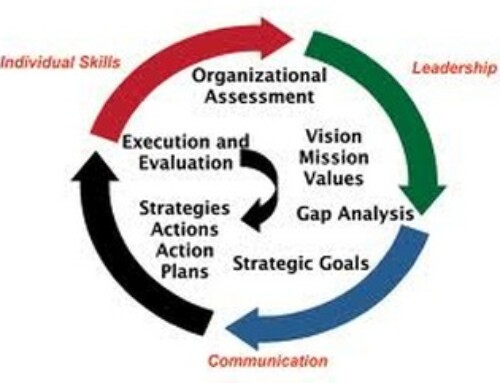 The data we use in the real estate industry to understand market trends and to help buyers and sellers in their real estate transactions is largely historic. Another way to look at that, is, it is dated, old news. We have real estate markets today that are changing very quickly. Changes may be driven by high numbers of distressed property sales, REOs, short sales, and foreclosures etc. or normal market activity but the results are the same. Much of the real market activity in the form of offers is currently invisible. This means there may be a huge amount of activity going on in a given marketplace that most are simply not aware of because it hasn’t been recorded as a “final” sale! So in essence, when our industry leaders report trends, they really aren’t trends, they are just the wake of the boat which may or may not be a true indication of where that boat or market is heading. To know that, we need to have “predictive data” and one way to do that is to understand what “offer activity” is taking place.
The data we use in the real estate industry to understand market trends and to help buyers and sellers in their real estate transactions is largely historic. Another way to look at that, is, it is dated, old news. We have real estate markets today that are changing very quickly. Changes may be driven by high numbers of distressed property sales, REOs, short sales, and foreclosures etc. or normal market activity but the results are the same. Much of the real market activity in the form of offers is currently invisible. This means there may be a huge amount of activity going on in a given marketplace that most are simply not aware of because it hasn’t been recorded as a “final” sale! So in essence, when our industry leaders report trends, they really aren’t trends, they are just the wake of the boat which may or may not be a true indication of where that boat or market is heading. To know that, we need to have “predictive data” and one way to do that is to understand what “offer activity” is taking place.
I recently had the pleasure of speaking with Christian Broadwell, the CEO of a company called Realty Pilot that we have done some consulting work for. Realty Pilot offers a number of MLS, broker and agent products and one, called “Offer Runway”, offers MLSs a unique opportunity to create a more efficient and automated offer process while providing MLSs, brokers and agents access to exclusive and predictive market information not previously available to help them and their customers to better understand true market conditions. In our view, having access to offer information to better understand what is really happening in any given market before sales actually take place makes a lot of sense. As part of our review process, I asked Christian, who is a practicing broker in the Phoenix area as well, to talk about why he felt creating an offer tracking program was so important.
The following is Christian’s response.
Christian Broadwell on “Offer Runway” MLS Integrated Offer Button
In my opinion, 90 days behind the curve is no way any business should be run, including an MLS, yet that is how every MLS today runs in terms of data. What we see as the latest information that MLSs provide agents in the form of sales data in most cases is already 90 days old. So you think a sale price that closed yesterday is the best information for a predictive market? I am here to open your eyes to critical market data that has been right in front of all of us. Every offer that is made on a property is only as good as the time it is made. Buyers go through extensive research, property inspections and comparisons before they make that decision to offer a price. You may ask, “what about sale price? Doesn’t a buyer use sales to determine price?” Yes but that sale price is only a baseline measurement and it definitely does not provide the true value that the buyer has determined for a particular home. How many times does a buyer make an offer for the exact amount of the listing and ask the seller for nothing else?
So imagine this, a buyer makes an offer on a home and submits the offer, day 1. Next the listing broker receives the offer via email, fax, hand delivered etc. But the MLS has no idea this offer was made or the price. Then several more offers come in and soon there is a multiple counter. The seller may then take up to 10 days in some situations to approve an offer. Now we are somewhere between day 11 and 15. The next step is to have the accepted offer receive final signatures and start the transaction period. During the transaction period there are a few actions that require additional time beyond the original 45 days to agree upon within the contract and they extend it another 12 days. Finally the property closes and the time it took was between 70 and 90 days. If we were in an appreciating or declining market, this offer price would represents a historical price if not seen, causes buyers to lose sight of real time data. What happens if the price accepted was lower or higher than the averages of all of the offers made on that property? How many times has a seller offered incentives to a particular buyer?
Not having access to this offer data, real time creates one issue, poor analytics. If I were doing a study on how many buyers would make an offer for $100,000 on a house because someone said it was worth $120,000 and we used one buyer to do the study, would that be considered good statistical analysis? Of course not but every time an agent enters sales data into the MLS, the MLS is using that data as the Holy Grail to the sale even though there could have been 5 other higher offers. What I am saying is the offer price of one person does not make up for the whole and sale data is never going to truly equal current market values. Additionally, current market values are only true if you have the averages of all current offers. Have you ever heard a stockbroker saying buy this stock because 90 days ago someone bought it at a certain price? Once again, current market data is essential in an ever-changing market and I believe understanding, recording and sharing limited offer data is one major way to do this.
If you would like to know more about Realty Pilot’s MLS integrated offer management system, you can reach Christian by email at chrisb@realtypilot.com or 480-206-1258




